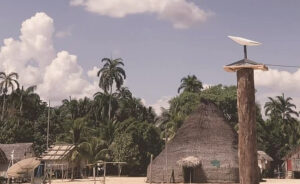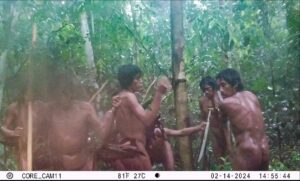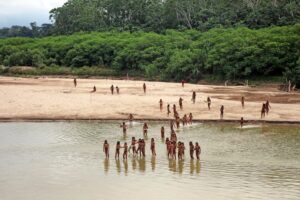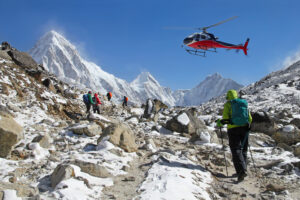Gabriele Croppi in Velho Airao, Brazil
Italian photographer Gabriele Croppi has started his solitary expedition to trace the Amazon River from the mouth to the source (December 1, 2016 – March 1, 2017).
During the last days of 2016 and the first days of 2017 Gabriele visited Velho Airao, an old abandoned settlement established in XVII century on the bank of the Rio Negro. See incredible pictures here https://www.slowing.co
Additionally, to find more about Velho Airao check these links:
https://pt.wikipedia.org/wiki/Velho_Airão
…. and in English:
Old Airão
From Wikipedia, the free encyclopedia
Coordinates : 01º 56 ‘32.2 “S 61º 22’ 27.4” W
Old Airão or Airão Velho, as it is called by the residents of Novo Airão, is an almost uninhabited village in the state Brazil ‘s Amazon [1] . It was once a village of medium importance, only named Airão, founded in 1694 , the first town on the banks of the Rio Negro [2] , older than the first capital of Amazonas. It is the site of the former headquarters of the municipality of Novo Airão . [3]
It is located within the mosaic of the Lower Rio Negro in the Rio Negro North Sector State Park . [4]
It was one of the most important towns in the middle Rio Negro since the time of Portuguese settlers to the Second World War , when the Allies found their greatest source of rubber for the manufacture of tires and latex surgical materials in the Amazon . Airão concentrating all production of rubber of the upper Rio Negro, the Jaú River and its tributaries and the White River , bringing the production of villages near Boa Vista (Roraima) . With the end of the war, the British began to buy latex its colony: the Malaysia . The Amazonian producers were not prepared for this and as Airão was a point of capture and distribution, the city failed. With the decay of the rubber cycle , its residents began to abandon it, to be left by the last resident in 1985 . Much of the population moved to villages closer to the state capital, Manaus , but most (108 people) was transferred to the village of Itapeaçu, which was renamed New Airão .
According to the historian Victor Leonardi (1998): “At the confluence of the Rio Jaú and the Negro there are ruins of a small town called Airão, formerly Santo Elias do Jaú, founded by missionaries in 1694. [ The process of definitive ruin of the Airão, after rapid and non-sustainable economic growth generated in the rubber plantations between 1880 and 1914. […] The old city of Airão is today a dead city on the banks of the Rio Negro, 250 kilometers northwest of Manaus. ” [5]
As the population was leaving the city, the legend of the ants arose. A politician at the time said that the population was being devoured by ants and asked for help to change the county seat. Truth or lie, the fact is that from 1950 the population began to be transferred to where it is today New Airão.
Since 1985, the Brazilian navy began to use the abandoned city targeted for training shots of their ships by the year 2005, when the city was listed by the Historical and Artistic Heritage Institute National IPHAN . But only in 2010 IPHAN technicians began to raise data in place.
Since 2005, around seven families have returned to the area, making their homes around the ruins and helping to guide the tourists who visit the old village.
According to a report dated December 29, 2015, only one resident still resides in the city. [6]
https://www.nytimes.com/2015/05/09/world/americas/airao-velho-brazil-shigeru-nakayama.html?_r=0
To see Part 1 of Gabriele Croppi story please check: https://explorersweb.com/Special-Pictures-from-the-Amazon-by-Gabriele-Croppi-2016-12-27-30902
Posted by Piotr Chmielinski, Jan. 6, 2017






